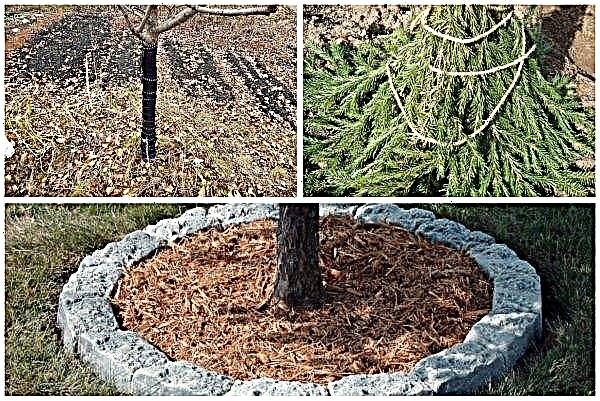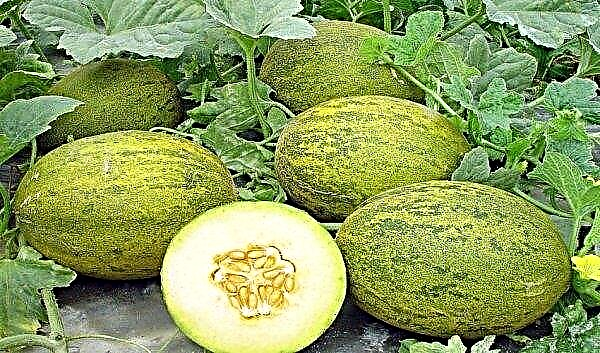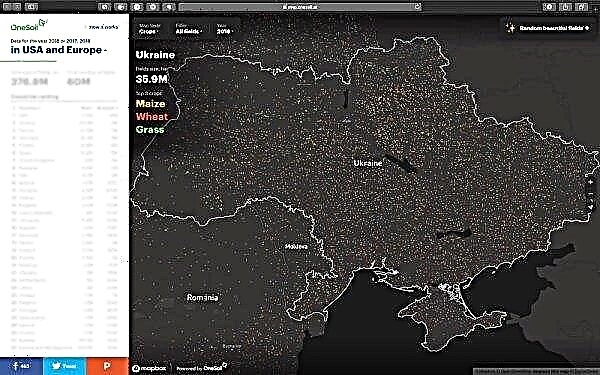Building a chicken coop for their wards is only half the battle. It is important to know how to properly equip it, what should be the places for layers, requirements for the nest. We will deal with these and other issues in today's article.
Jack Requirements
Birds of different breeds differ in size, behavior, preferences.
Did you know? The chicken is a descendant of a tyrannosaurus, one of the oldest and largest predators in history.
Therefore, the device and location of the nests for chickens has some rules:
- the number of seats is calculated on average one for five individuals;
- dimensions should correspond to the size of the hen;
- placement - away from windows, feeders, doors, perches with other birds;
- lighting should be around the clock, at some distance from the nest, so as not to interfere with the laying hen;
- the bottom should be ventilated so that the litter remains dry;
- for closed types, the roof is made with a slope so that other birds do not have the opportunity to settle on it;
- the nest must have sills;
- if the construction is two- or three-tier, “take-off” strips should be thought out.

Types of Laying Nests
By type of device, chicken nests are divided into several types.
Let's consider them in more detail:
- open - structures without a roof, often made of improvised items (boxes, buckets, old baskets). Since hens need peace and silence, this type is considered temporary, it is advisable to replace it;
- with egg tray - the most convenient type of design, eggs on the slope fall into the tray, which facilitates the process of collecting them and serves as a kind of safety measure;
- closed - Closed-type constructions are convenient for the brood hen itself: no one and nothing interferes with it. Such nests can be made in several tiers and with a large number of sections, which will allow to provide in places a large number of layers and compactly place a live incubator in the chicken house.
Features of keeping chickens in nests
Nesting of hens is popular mainly in small poultry farms.
This content method has several advantages, but there are also disadvantages. We will consider them in detail:
- Pros:
- unlike the cell content, the time of egg productivity increases;
- the laying hen can at any moment go for a walk or to the feeding trough;
- with competent design - space saving;
- creation of optimal conditions for hatching;
- prevention of spontaneous egg laying (only in one place).
- Minuses:
- the probability of eggs cracking (nest without collection);
- it is inconvenient to clean the place (in order not to disturb the laying hen, cleaning is done during her walk or feeding);
- to equip nesting sites separately from the rest of the herd, a large house is needed.
Did you know? The color of the egg does not depend on nutrition, but on the breed of the laying hen. It is noticed that the owners of red earrings carry brown eggs, the owners of light, pale pink - white eggs.
How to do it yourself
Today in pet stores you can buy ready-made nesting structures for their layers. This is convenient, but not everyone can afford it. It is easier and more financially profitable to make a place for the layers themselves, especially since in every household there are remains of building materials, wooden bars and boards.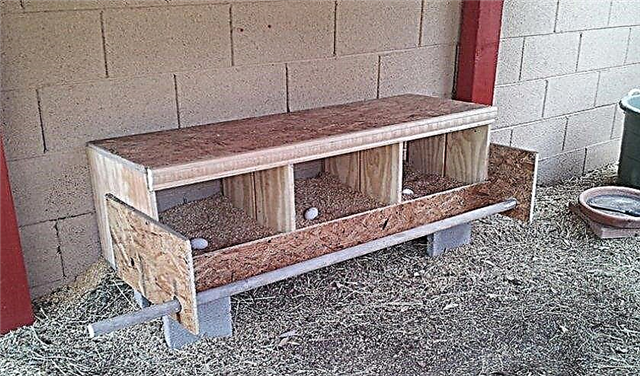 In addition, you can build and equip a nest according to your own idea and desire.
In addition, you can build and equip a nest according to your own idea and desire.
Jack box
The nest in the form of a booth can be made two-story, which will allow it to be compactly placed.
For the manufacture you will need such materials and tools:
- wooden pallet 120x80cm;
- plywood sheets 20 mm;
- wooden bars;
- self-tapping screws;
- corners;
- screwdriver;
- saw;
- roulette;
- pencil.
Three pockets 40X40 can be placed along the length of the pallet that will serve as the floor. We measure the width of forty centimeters for the nest, leave the protrusion 10-15 cm, cut off the rest.
Do-it-yourself jack-box: video
The design basis is ready, then in stages:
- We cut out the back wall of plywood with a height of 80 cm, fasten it to the screws.
- We also prepare two sidewalls with a height of 80 cm and a width of 40 cm. We fasten it to the screws on the sides, and we additionally fasten the side and back walls together with corners.
- We divide the workpiece into three equal sections by length (future nests).
- We are building four partitions. On four bars 50 cm long and four 40 cm long, we screw the plywood blanks corresponding to the dimensions of the sections 40x40 cm.
- We place the partitions on a pallet with the bar down and screwed with screws. Longer bars should be on top.
- We cut a blank of 80x40 cm size from a plywood sheet and fasten it to the upper boards of the lower nests.
- As well as in the lower part of the structure we make partitions. We get a booth with two floors of sections.
- For a sloping roof type, a trim from the pallet as a protrusion can be attached to the rear of the structure.
- We fix the roof (plywood sheet). On the sides we cover with triangular plywood blanks.
- In the lower part of the sections, it is necessary to make a fence, attach a bar 10 cm high.
- On the protruding parts of the bars in the lower part of the second floor we screw the bar, which will serve as a support for the residents of the upper floor.
- In the section, you need to arrange a soft bed of hay or sawdust.
Important! The finished design is located near the wall of the chicken coop on a stand, far from the feeding place of the herd.
With egg collector
A convenient and often used option on small farms and large poultry farms is a nest with a collection of eggs.
For manufacturing you will need:
- plywood;
- Styrofoam;
- wooden planks and bars;
- piece of fabric;
- saw;
- door hinges;
- screwdriver;
- self-tapping screws.
Egg chickens nest: video
Consider how to do it correctly:
- We collect a box of four walls. The bottom of the drawer is 40 cm wide and 55 cm long. The back wall is 40x40 cm. We cut the side walls from the workpiece 55x40 cm, where the ledge will be 15 cm high and the upper part of the wall 40 cm.
- We assemble all the details with the help of self-tapping screws, we close the formed ledge in front with a bar of plywood.
- The bottom of the nesting section in the rear must be raised to freely roll eggs. To do this, we fasten a 8 cm high block to the screws on the edge of the back wall. We screw a piece of plywood of the corresponding size on it.
- We close the upper part of the protrusion with a bar of the corresponding width, which we fasten to the hinges. Screw the improvised handle from the wooden plank to the lid.
- At the edge of the nesting part, screw a block. To it, with the help of small plates of soft, folded in half fabric fasten the curtain. It is desirable to cut the curtain along the length at equal intervals, approximately 10 cm.
- We cover the bottom of the protrusion with pieces of foam.
- Thus, a nesting section with a closed egg collector was obtained.
- The box can be placed on a support that raises it 40 cm from the floor.
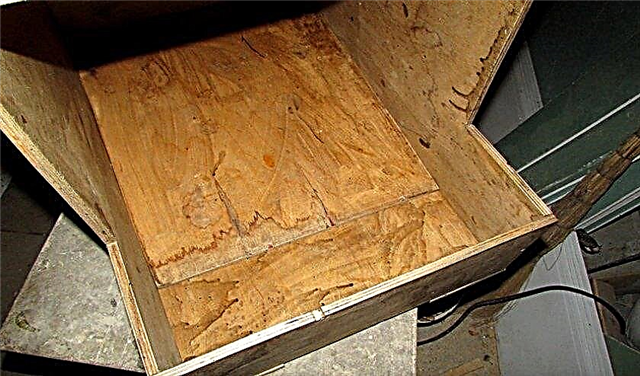
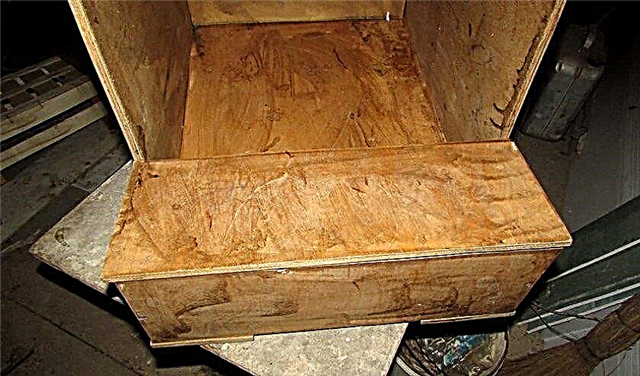



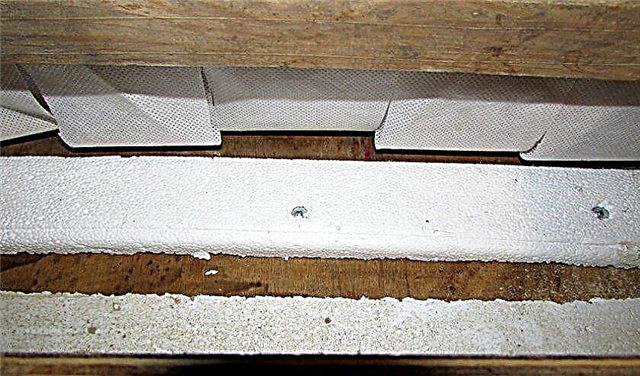
From improvised means
The simplest option, which does not require a large number of materials and tools, is to make a nest from a plastic bucket. You will need a bucket with a lid of 6-8 liters, a sharp knife, nails and a hammer.
Important! Beat the edge of the board with a soft cloth or rubber band so that the birds do not get hurt.
Production Instruction:
- The bucket must be nailed down to the wall of the chicken coop at a height of 30-40 cm from the floor.
- To put on a cover and to cut off part from it, so that the side in the lower part turned out.
- Cover the bottom of the bucket with sawdust or hay.
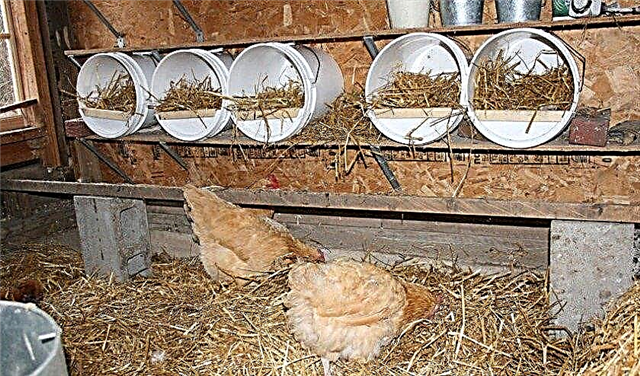
Nest Care
In order to provide chicken with favorable conditions for productivity, first of all, you need to know how to properly care for chicken nests.
The care scheme includes the following procedures:
- the litter is cleaned and replaced daily;
- once a week, a wet cleaning is carried out in the room with a solution of lime, after which it is thoroughly ventilated;
- once a month, the house is treated with smoke (iodide) sabers from parasites;
- regularly it is necessary to inspect the attachment of the nests, they can be destroyed;
- constant monitoring of temperature and humidity in the room is necessary.
Blueprints
Bird nests can be made from any materials found on the farm. The design may also be different: depending on the size of the chicken coop, the number of layers and other factors.
We bring to your attention several drawings for construction: 

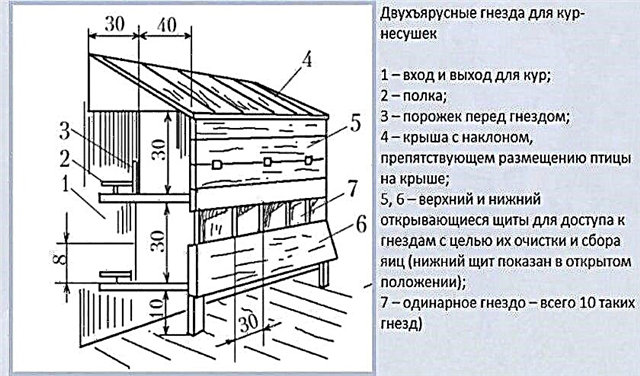 Self-designing hen seats will help save money and house space. Thoughtful arrangement and timely quality care will help increase the productivity of the wards.
Self-designing hen seats will help save money and house space. Thoughtful arrangement and timely quality care will help increase the productivity of the wards.

